#Daniel Truhitte
Explore tagged Tumblr posts
Text







THE SOUND OF MUSIC (1965), dir Robert Wise
#the sound of music#tsomedit#filmedit#perioddramaedit#musicaledit#weloveperioddrama#perioddramasource#useroptional#cinemapix#tusereliza#charmian carr#daniel truhitte#zue*
436 notes
·
View notes
Photo
The Sound of Music (Robert Wise, 1965)
Cast: Julie Andrews, Christopher Plummer, Eleanor Parker, Richard Haydn, Peggy Wood, Charmian Carr, Heather Menzies-Urich, Nicholas Hammond, Duane Chase, Angela Cartwright, Debbie Turner, Kym Karath, Daniel Truhitte. Screenplay: Ernest Lehman, based on a book for a musical by Howard Lindsay and Russel Crouse. Cinematography: Ted D. McCord. Production design: Boris Leven. Film editing: William Reynolds. Songs: Richard Rodgers and Oscar Hammerstein II.
gifs by pickled0ctopus






471 notes
·
View notes
Text

Charmian Carr-Daniel Truhitte "Sonrisas y lágrimas" (The sound of music) 1965, de Robert Wise.
11 notes
·
View notes
Photo

The Sound of Music, 1965
#the sound of music#1960s#old hollywood#musicals#dreamy#cool#whimsical#cottagecore#aesthetic#gazebo#love#romance#young love#dancing#julie andrews#charmain carr#daniel truhitte#1960s fashion#photography#vintage#retro#vintage fashion#beautiful#vintage photography
246 notes
·
View notes
Text






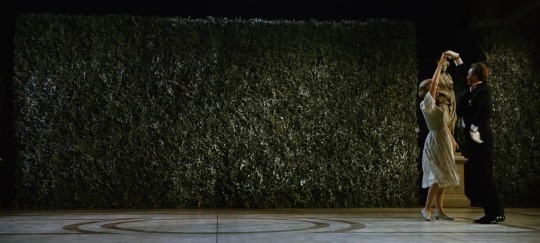



The Sound of Music (1965)
Director - Robert Wise, Cinematography - Ted D. McCord
"You brought music back into the house. I had forgotten."
#scenesandscreens#marni nixon#Ada Beth Lee#Doreen Tryden#Evadne Baker#Doris Lloyd#Portia Nelson#Ben Wright#Daniel Truhitte#norma varden#Gil Stuart#Duane Chase#angela cartwright#Debbie Turner#Kym Karath#anna lee#richard haydn#peggy wood#Charmian Carr#nicholas hammond#heather menzies#julie andrews#maria von trapp#christopher plummer#eleanor parker#the sound of music#robert wise#Ted D. McCord
55 notes
·
View notes
Photo



#texts from last night#source: texts from last night#source: tfln#TFLN#text post meme#the sound of music (1965)#the sound of music#Daniel Truhitte#Charmian Carr#Christopher Plummer#Eleanor Parker#Richard Haydyn#memes#rodgers and hammerstein#musical film#classic movies#classic film#old hollywood#sound of music memes
57 notes
·
View notes
Photo

Sixteen Going On Seventeen - Charmian Carr and Daniel Truhitte (The Sound of Music)
#aesthetic#blue aesthetic#blue#song aesthetic#lyric aesthetics#lyrics#song lyrics#the sound of music#charmian carr#daniel truhitte#everything is queue#show tunes
34 notes
·
View notes
Text
The Sound of Music (1965); AFI #40


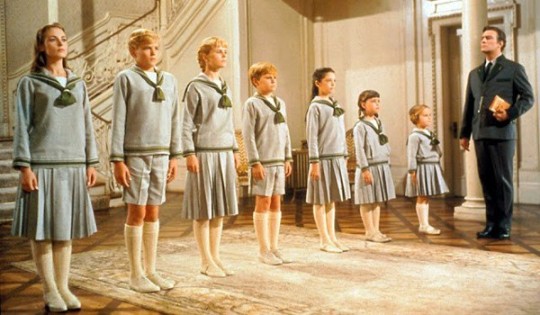


The next film that we reviewed from the AFI Top 100 was the most successful movie adaptation of a Hollywood play of all time, The Sound of Music (1965). The story was based on the 1949 memoir of Maria Von Trapp, who became a nanny for a retired naval officer and his children. They lived together in Austria and had to escape from the invading Nazi party right before the start of WW2. That story was turned into a musical by the dynamic duo of Rogers and Hammerstein and eventually translated to a Best Picture Oscar winner directed by the great Robert Wise. The film was nominated for 10 Academy Awards and won 5 of them. This truly is a phenomenal story with great music and I can't wait to get into the breakdown. Of course, I do need to mention...
SPOILER ALERT!!! IT IS NOT LIKELY THAT MANY PEOPLE DON'T HAVE AT LEAST AN IDEA OF THE PLOT OF THIS FILM, BUT I REALLY GO OVER THE DETAILS!!! MAKE SURE THAT YOU REALLY KNOW THE STORY AND HAVE SEEN THE MOVIE BEFORE GOING ANY FURTHER!!!
---------------------------------------------------------
The film opens on that iconic spinning shot of Maria (Julie Andrews) from a helicopter and establishes the beautiful hills of Austria. The whole movie is set on and around the city and hills of Salzburg, Austria. It is 1938, dangerously close to the rise of the the Third Reich and Nazi occupation, but Maria is not involved in such things at the time. She is young, enthusiastic, and completely lacking discipline. Turns out she is training to be a nun at the millennia-old Nonnberg Abbey and the Mother Abbess (Peggy Wood) is considering what to do with her. It is decided that Maria will leave the abbey for a time and work as a governess for one Captain von Trapp (Christopher Plummer) and his seven children.
On the day she arrives, Maria learns that the Captain cares for his children with strict military discipline and also that the kids have caused a lot of trouble for their previous governesses. It seems that their mother has died and their father is distant, so they act out to try and get attention. The kids put a frog in Maria's pocket and place a pine cone in her chair at dinner, but she instead thanks them for their warm welcome and they all cry out of guilt. That night, the eldest daughter Liesl (Charmian Carr) goes out and meets with a young suitor named Rolfe (Daniel Truhitte). They sing together in the rain and then she returns to the house via Maria's room. While there, a thunder storm begins and all the other children join out of fear. Maria sings with them about getting over their fears by imagining good things and the children begin to trust her. The next morning, the Captain leaves to go to Vienna giving Maria a chance to bond with the children even more.
While the Captain is away in Vienna, Maria decides she will teach the children to have fun and allow them to play. She tears down drapes and makes play clothes for the children, then takes them around Salzburg and the surrounding mountains. She teaches them how to sing, allows them to climb in trees, and piles them in a boat to go rowing. The Captain unexpectedly returns to the villa with rival love interest Baroness Elsa Schraeder (Eleanor Parker), a rich Viennese socialite and widow looking for a new husband, and mutual friend "Uncle" Max Detweiler (Richard Haydn). The Captain and his guests are greeted by Maria and the children returning from a boat ride on the lake that concludes when the boat overturns. Displeased by his children's clothes and Maria's impassioned appeal that he get closer to his children, the Captain orders Maria to return to the abbey. Just then, he hears singing coming from inside the house and is astonished to see his children singing for the Baroness. Filled with emotion, the Captain joins his children, singing for the first time in years. Afterwards, he apologizes to Maria and asks her to stay.
Impressed by the children's singing, Max proposes he enter them in the upcoming Salzburg Festival but the suggestion is immediately rejected by the Captain as he does not allow his children to sing in public. He does agree, however, to organize a grand party at the villa. The night of the party, while guests in formal attire waltz in the ballroom, Maria and the children look on from the garden terrace. When the Captain notices Maria teaching Kurt the traditional Ländler folk dance, he cuts in and partners Maria in a graceful performance, culminating in a close embrace. The children get together and sing a goodnight song to the party crowd and the impressed Max insists that Maria join the group for dinner. Confused about her feelings, Maria blushes and breaks away to change clothes. The Baroness, who noticed the Captain's attraction to Maria, hides her jealousy while convincing Maria that she must return to the abbey. Instead of joining the party, Maria leaves a note and runs back to the abbey.
Intermission
Back at the abbey, when Mother Abbess learns that Maria has stayed in seclusion to avoid her feelings for the Captain, she encourages Maria to return to the villa to look for her life. We get the very appropriate, but perhaps the most out-of-nowhere and cringy performance in the film, "Climb Every Mountain" sung by the Mother Abbess. It is convincing and Maria returns to the villa, only to learn about the Captain's engagement to the Baroness and agrees to stay until they find a replacement governess. The Captain's feelings for Maria, however, have not changed and he breaks off his engagement with the Baroness and proposes to Maria. The announcement of the first engagement, the return of Maria, the break-up, and the second engagement all happen in a single day in film and about 20 minutes of run time, so make sure to pay attention.
While they are on their honeymoon, Max enters the children in the Salzburg Festival against their father's wishes. When they learn that Austria has been annexed by the Third Reich in the Anschluss, the couple return to their home, where a telegram awaits informing the Captain that he must report to the German Naval base at Bremerhaven to accept a commission in the German Navy. Strongly opposed to the Nazis and the Anschluss, the Captain tells his family they must leave Austria immediately. That night, as the von Trapp family attempt to leave, they are stopped by a group of brown shirts waiting outside the villa. When questioned by Gauleiter Hans Zeller, the Captain maintains they are headed to the Salzburg Festival to perform. Zeller insists on escorting them to the festival, after which his men will accompany the Captain to Bremerhaven.
Later that night at the festival, during their final number, the von Trapp family slip away and seek shelter at the nearby abbey, where Mother Abbess hides them in the cemetery crypt. They are about to get cleanly away when the are discovered by the boy who was courting Liesl. Rolfe is sill a boy but is shouldering the responsibilities of a man. He lets the family get by because he can't bring himself to harm them, but he does call for backup. More brown shirts soon arrive and attempt to pursue, but they discover their cars will not start as two nuns have removed parts of the engines. The next morning, after driving to the Swiss border, the von Trapp family make their way on foot across the frontier into Switzerland to safety.
------------------------------------------------------
I think the first thing to mention is the undeniably beautiful music. I absolutely love the music of this film and how each song starts off simple and just builds in complexity. The best songs either set the scene or progress the plot and are magnificently placed. From the opening song that sets the scene, to the discussion of how to deal with a woman that doesn't fit in, to the discussion of what to do when you are afraid, to putting your love and affection towards somebody who can't love you. The themes are incredibly deep when you consider the lyrics of the songs as foreshadowing the rest of the movie. The von Trapp family has to escape into the hills and they do it using their musical skills. When the family is trapped and has to keep quiet despite extreme fear for their lives, they are able to make it through because they have been taught to suppress their fear thinking of their favorite things. "Sixteen Going on Seventeen" has the young German boy talking about being a man because he is slightly older then the eldest von Trapp daughter, yet he is charged with finding the family and turning them over to the German military and he can't do it. The music serves a purpose and the movie would be far less palatable for it, despite the story being a truly fascinating real life drama.
The great actress Julie Andrews does such a good job as Maria. This was most definitely a perfect role for her and might be her greatest performance. It is between this role and the part she played in Mary Poppins the year earlier. In fact, Julie Andrews was much better known for her Broadway performances at the time of this film. Mary Poppins was the first feature film role for Julie Andrews and The Sound of Music was technically her third. She jumped on the Hollywood scene and was exceptionally lucky that musicals were popular and she was a beautiful young triple threat (acting, singing, and dancing). She is the perfect example of success being a mixture of preparation, luck, and opportunity.
One thing I forget about musicals from this time period is how quickly plot points (like falling in love and building relationships) happen. I don't mean in terms of run time, I mean in terms of time passing by in the story. Maria is sent to be with the von Trapp family and the children go from hating her to needing and trusting her in a single day. She goes from being a beloved nanny to running away to rejoin the nunnery in one evening. The captain goes from proposing to the Baroness to Maria returning to breaking off his engagement to asking Maria to marry him in a 48 hour period. The Captain and Maria return to Austria after their honeymoon and enter a singing competition to escape to Switzerland all on the same day. In terms of run time, that first day actually takes up the first hour of the film. That last night takes up the last half an hour. I doubled checked this just to make sure, but it is true: only 4 critical days are shown in the film. Maria leaves the convent and arrives at the von Trapp house. Time passes, The Captain returns to fire Maria but changes his mind and instead throws a party where Maria runs away. Time passes. Maria is convinced to return and arrives to find the Captain is engaged before he changes his mind to leave the Baroness and immediately proposes to Maria. We see them on their wedding day. Time passes. The Captain and Maria return and he is ordered to join the Navy, but he instead using the children's performance that night as cover to escape with his family. End of movie.
Despite the story being about a young family escaping the Nazis, this film has the lightest rating (G) of any best picture winner. Some films were not rated at the time that would now be considered a G rating and Oliver! in 1968 had a rating of GP (general public) that no longer exists. It seems like a movie that doesn't have at least a bit of a serious tone can't win a Best Picture and that comes with a heavier rating. It was funny that the Amazon Prime virtual copy that I saw most recently starts out with a screen that says rated G for violence, language, and adult situations.
There are some funny behind the scenes stories since there were many young children in the film. This means that many of them are still alive and can relive their memories with young fans. We are also lucky enough to have Dame Julie Andrews still working and sharing her experiences like a champ. She really is a treasure. The young girl who played the adorable Gretl von Trapp (Kym Karath) is only in her early 60s since she was only six in the film. it was actually her 4th picture, giving her more experience in film than Julie Andrews at the time. There were plenty of specials commemorating the 50th anniversary of the film back in 2015, so there are actually some really good interviews with the surviving cast that are relatively recent. I would highly suggest the 20/20 review of the film that can be found on YouTube:
NBC|ABC|20/20: The Untold Story of 'The Sound of Music - YouTube
There was some concern from the cast and the producers that a film version of a musical would not be financially viable. Other Rogers and Hammerstein musicals had been adapted to film and had not lived up to the success that was found on Broadway. Luckily, director Robert Wise used the natural lighting and countryside of Austria and Germany to slightly excuse the sudden singing of a musical that seems out of place in film. Also, he had recently directed West Side Story and knew how to best accomplish this. Then again, who wouldn't want to dance around and sing in those mountains? Wise did some things like lowering the tone of the song "Climb Every Mountain" and moving Maria through the countryside while she was singing "Confidence in Me." This helped reduce the cringe factor.
So does this film belong on the AFI top 100? Oh God yes. It is a great story adapted by the greatest American songwriting duo and directed by one of the great American directors who specialized in musicals. The list would be lacking if this film was not on it. Would I recommend it? Oh man, yes. Go watch it right now. Oh, you just saw it? Watch it again. It's that good.
#robert wise#julie andrews#the sound of music#musicals#introverts#introvert#60s#classic film#best picture#Oscar Winner#rogers and hammerstein
25 notes
·
View notes
Text
The Sound of Music
Remaining relevant even fifty years after its release, The Sound of Music (Robert Wise, 1965) has earned the title of one of the greatest American movies of all time. This musical is based on the real Von Trapp family, following main character Maria (Julie Andrews) as she looks after the seven children. Through analysis of the narrative, editing, tone, and sound, this iconic film has so much to offer the audience.

The title of the film carries a lot of weight throughout the narrative. Specifically, during the scene in which Captain Georg Von Trapp (Christopher Plummer) is scolding Maria for allowing the children to play and immediately stops when he hears them begin to sing the song, “The Sound of Music.” There is a shift in the narrative here and for almost all of the characters, everything changes. For the kids, they get what they have been searching for: their father’s attention. They harassed each governess, driving them away from their home, in the hopes that their father would notice them. Now, they realize that all it took was the sound of music. For the captain, he finally understands what had been missing in his life. Maria brought music back into their home, something that hasn’t been present since the passing of his wife. The change in him is visible on his face – the recognition and appreciation of the music is immediately clear. For Maria, music is finally something she can be proud of. At the abbey, she was scolded for singing. Here, it is what brought her closer to the family.
The specific character of Maria is imperative to the film’s narrative. She isn’t simply a device to move the plot along. Her quirky personality and quick wit is so specific to this character – it wouldn’t have worked any other way. She is better with children than she is with adults, as is clearly seen at the party. Baroness Elsa Schraeder (Eleanor Parker) is a stark contrast to her, described as “charming” and “graceful.” While she was more of a stock character, a gold digger and almost “evil stepmom” type, planning to send the children off to boarding school, she was necessary for the audience to see the difference in the care the children received from each woman. They are complete opposites. Maria’s modest dresses dull in comparison to those of the baroness. Yet somehow, that is what allows Maria to fit in more. Her kind and patient persona is that of a mother.
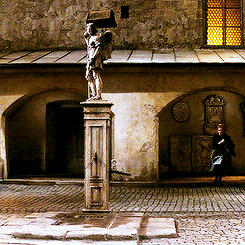
For the most part, the filmmaker used traditional invisible editing, allowing the focus to be on the narrative. However, certain scenes were edited in order to hint to the audience how they should be feeling. There were several instances in which the characters almost seemed to glow. The shots incorporated soft lighting, causing them to take on a glossy and romantic feel. For example, when Rolfe (Daniel Truhitte) and Liesel dance in the gazebo, when the Captain watches his children sing “The Sound of Music,” when the Captain and Maria dance at the party, and when they profess their love for each other again at the gazebo, they are edited in this way. It is important to note that each of these scenes have something in common: love. The filmmaker used this technique to show the audience when the characters felt a sense of love, even if they weren’t aware of it themselves.
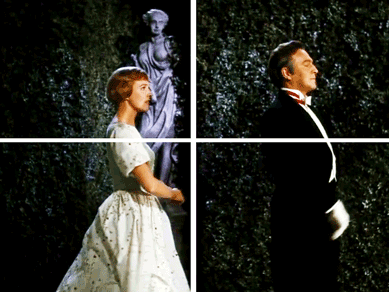
The Sound of Music maintains a pretty joyful tone, especially when Maria is with the children. Her interactions with them are almost always hopeful and festive. It also becomes romantic as Maria and the captain grow closer. However, the film takes a sharp turn after the wedding and the tone changes abruptly. It instantly becomes one of high anxiety. The first shot after the wedding consists of soldiers marching in front of a swastika. The looming threat of Hitler’s reign becomes the focus of the narrative. There are only subtle hints at this threat earlier, such as the complaints about the Austrian flag being hung at the party in the Captain’s house. What was a jolly, musical love story about a family becoming whole again suddenly shifts into a secretive escape from Hitler’s rule and an expression of their Austrian patriotism. The reasoning for this abrupt change is most likely because the story is based in reality. The Von Trapp family’s escape from Austria is central to their story. Although the movie isn’t entirely historically accurate, it would be an injustice to not incorporate this important event in their lives. If The Sound of Music wasn’t based on real events, it would’ve been plausible and even satisfying to end the film with the wedding of Maria and Georg.

The sound in this film is perhaps the most important part of the story. First, lack of sound was used early on to make an impression. When Maria first walks into the house and looks around, the scene is completely silent. She sees grand but empty rooms and she starts to dance, filling the room with a bit of life, foreshadowing what she was about to do for this family. Apart from her footsteps echoing throughout the house, there is absolutely no sound. Then the captain slams the door open, making a loud noise, alarming the audience. The silence was used so that this specific moment – the moment they meet – would be engrained into our heads. She also breaks the silence at the dinner table. The captain explains to her that they usually don’t speak at dinner and instead just eat their food. But she has too much to say. Later on, the captain explains that it was this dinner in which he fell in love with her – particularly when she screeched as she sat on the pinecone. She had broken the silence in their home. Of course, the actual sound of music was of great significance in the film. The tunes of the songs that they sing are repeated as background music at several points throughout the movie. For instance, the song, “The Sound of Music,” plays when Maria and Georg first kiss towards the end of the film. It’s clear that this song reminds him of Maria as it’s the first song that the kids sang in front of him, thanks to her.
On its own, The Sound of Music is a captivating film with a message that transcends time. When analyzed past the surface it is much more than that. The story becomes a work of art holding endless possibilities.
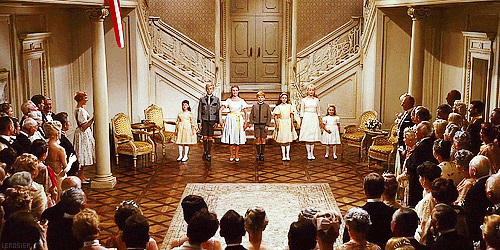
30 June 2019
#sound of music#julie andrews#film#filmreview#filmreviews#christopher plummer#the sound of music#movie#movies
5 notes
·
View notes
Photo

Charmian Carr and Daniel Truhitte in The Sound of Music (1965)
0 notes
Text
ASK MEME
Rules: Answer 30 questions and tag 20 people.
Thanks @whovianhalfblood
Nickname(s): Mazy (short for Amazing Grace), Grr Grr (as I baby I made a lot of growling noises, especially in my sleep.)
Gender: Female
Sign: Sagittarius
Height: 5′6 1/4″
Time: 6:56
Birthday: December
Favorite Bands: The Pit Orchestras of Broadway musicals
Solo Artists: BILLY JOEL
Song stuck in my head: There is ALWAYS music playing in my head, except right now it’s strangely quiet which is kind of disturbing. Is this what other people feel like all the time???
Last show I watched: Other than the news??? I was watching clips from The View earlier. Does that count?
When did I create this blog: I was here for the MishApocalypse, so I want to say 2011 or 12??????
What do I post: I mostly reblog stuff, so if it’s something from someone I follow and I like it, then I reblog it. Recently, it’s been X-Files heavy, but there’s always plenty of Harry Potter in the mix.
What did I last google: Daniel Truhitte, who played Rolfe in The Sound of Music (my favorite movie).
Other blogs: I had one, but it was short lived, and I deleted it.
Do I get asks: Not in years, plus also, I don’t get notifications, and then I don’t reply because I don’t know they’re there, and three years later I see that you asked me a question!
Why did I choose this URL: Because the english translation of the Hogwarts motto is “Never Tickle a Sleeping Dragon”, so my url is I tickled the sleeping dragon, and then my icon is a fire breathing dragon.
Following: 1,553
Followers: 267
Average hours of sleep: Recently? 10 or 12?
Lucky number: I have favorite numbers, but not really lucky ones.
Instrument: Voice, Piano, Vioin, Mountain Dulcimer (very rudimentary)
What am I wearing: slippers, christmas socks (Epiphany is tomorrow), jogging, a black t-shirt, and a house robey thing.
Dream job: Actress
Favorite Food: It changes, but I love Chinese food.
Last book I read: Under a Cruel Star by Heda Kovaly
3 favorite fandoms: Harry Potter, Steggy (Captain America), and the X-Files (but honestly I pretty much enjoy all my fandoms)
So, feel free to do this if you want, even if I didn’t tag you. I’m just tagging people that I don’t really know, or want to know more about.
@thegladelf, @elphabaforpresidentofgallifrey, @standingcowrrdly, @robotbeowulf, @stupideffinbee, @raptoradapter, @fishdetective, @reichenbannakaffalatta, @sneakybastardsword, @sunflowerseedsandscience, @i-am-stormageddon, @peggyjemmafitzrogers, @cosima-scully, @unexspockted, @fortuitous-occurencess, @wholeperson
@hands-of-blue, @visiblesin, @fallintothegrey
0 notes
Text
The Best of December 2022

Best Discovery: The Sweet Hereafter
Runners Up: Comet in Moominland, The Friends of Eddie Coyle
Best Rewatch: Fantasia
Close Second: Mulholland Drive
Runners Up: Beyond the Valley of the Dolls, The Blues Brothers, Cruising, The Parallax View, The Sound of Music
Most Enjoyable Fluff: Haul Out the Holly
Runners Up: The Iron Lady, Malice, The Nine Kittens of Christmas, The Nine Lives of Christmas, One for the Money, Three Wise Men and a Baby
Oddity of the Month: Five Corners
Best Male Performance: Al Pacino in Cruising
Runners Up: Dan Aykroyd and John Belushi in The Blues Brothers, Ian Holm in The Sweet Hereafter, Robert Mitchum in The Friends of Eddie Coyle, Christopher Plummer in The Sound of Music
Best Female Performance: Naomi Watts in Mulholland Drive
Runners Up: Julie Andrews in The Sound of Music, Laura Harring in Mulholland Drive, Debra Winger in A Dangerous Woman
Best Supporting Performance or Cameo: Angelo Badalamenti in Mulholland Drive
Runners Up: James Brown, Cab Calloway, Ray Charles, Aretha Franklin and Charles Napier in The Blues Brothers, Patrick Fischler, Monty Montgomery and Justin Theroux in Mulholland Drive, John Lazar and Duncan McLeod in Beyond the Valley of the Dolls
Most Enjoyable Ham: Meryl Streep in The Iron Lady
Runners Up: Ambrose the Dapper Cat in The Nine Lives of Christmas, Edith Bouvier Beale and Edith 'Little Edie' Bouvier Beale in Grey Gardens, Wes Brown and Lacey Chabert in Haul Out the Holly, Katherine Heigl in One for the Money, Tyler Hynes in Three Wise Men and a Baby, Dolly Read and Edy Williams in Beyond the Valley of the Dolls
Best Mise-en-scène: Fantasia
Runners Up: Comet in Moominland, Cruising, Hellbound: Hellraiser II, Mulholland Drive, The Parallax View, The Sound of Music
Best Locations: Mulholland Drive (Hollywood Hills, 'Winkie's Diner', 'Sierra Bonita' cottage complex)
Runners Up: The Blues Brothers (various cozy Chicago locations), The Parallax View (Gorge Dam, futuristic mirrored-glass tower, cold, dark interiors)
Best Score: Mulholland Drive (Angelo Badalamenti, David Lynch)
Runners Up: Cruising (Jack Nitzsche, Egberto Gismonti), The Parallax View (Michael Small)
Best Cartoon: Shiver Me Timbers!
Best Leading Hunk: Ross Jirgl in Love at the Christmas Contest
Runners Up: Alec Baldwin in Malice, Jon Hamm in Confess, Fletch, David Harbour in Violent Night, Tyler Hynes in Three Wise Men and a Baby, Niall Matter in When I Think of Christmas
Best Supporting Hunk: David Flick in One for the Money
Runners Up: Bouncer in Cruising, Matt Hamilton in Three Wise Men and a Baby, Duncan McLeod in Beyond the Valley of the Dolls, Mark Pellegrino in Mulholland Drive, Jarrod Phillips in Christmas Land, Daniel Truhitte in The Sound of Music
Assorted Pleasures:
- Desolate, painterly hellscapes in Hellbound: Hellraiser II
- Tantalizingly brief Dance of the Sugar Plum Fairies in Three Wise Men and a Baby
- Seedy gay underworld bathed in blue light in Cruising
- Diaphanous textures, subtly shifting color palettes, dramatic use of light and shadow, dazzling background art and effects animation in Fantasia
2 notes
·
View notes
Photo

The Moon Is Down (1943)
How do novelists follow up when they have written some of the greatest or most beloved books of all time? It isn’t easy, and expectations can be burdensome. John Steinbeck wrote The Grapes of Wrath in 1939 (which followed 1937′s Of Mice and Men), earning him a Pulitzer and a permanent place in the American literary pantheon. With two great American novels in his bibliography, Steinbeck then set out to write something unlike he had imagined before. Enter The Moon Is Down, a mostly-forgotten, slender 1942 novel about Nazis occupying a defenseless Norwegian town that even Steinbeck was dissatisfied with. Despite being lesser Steinbeck, 20th Century Fox paid $300,000 (more than $4 million in 2016 USD) for film adaptation rights – the highest such fee paid by any Hollywood studio at that time. Directed by Irving Pichel, The Moon Is Down stars Cedric Hardwicke, Henry Travers, Lee J. Cobb, Dorris Bowdon, Margaret Wycherly, and Peter van Eyck. Screenwriter Nunnally Johnson, who was friends with Steinbeck, asked for advice on the adaptation. Steinbeck, who barely disguised his contempt for his own work, suggested Johnson to, “tamper with it.”
An unnamed Norwegian village is conquered by a Nazi battalion led by Colonel Lanser (Hardwicke) in hopes to secure the local mine for warmongering purposes. The village’s militia – just over a dozen men – are slaughtered quickly, and German troops take over. The popular Mayor Orden (Travers) and local doctor, Albert Winter (Cobb), who remind Lanser and his deputies that their fellow citizens are unaccustomed to the ways of war, begrudgingly accept Nazi rule. But Orden, Winter, and other village leaders will not acquiesce, instead tacitly supporting efforts to undermine the Nazis’ exploitative, authoritarian ways. A somewhat, barely romantic subplot between Lieutenant Tonder (van Eyck) and Molly Morden (Bowdon) contests the durability of the relationship between the soldiers and the villagers, and is easily the most awkward segment in the film.
Steinbeck’s novel was also commissioned by the Office of Strategic Services (OSS) – a predecessor of the Central Intelligence Agency (CIA) – to counter Nazi propaganda within the United States. Steinbeck might not have been an ideal choice as an intelligence-gathering implant in the Nazi Party, but he sure as hell could write effectively even at his crappiest. It is in a similar mindset that Irving Pichel’s film adaptation adopts. Pichel’s film maintains the democracy-totalitarian dichotomy in Steinbeck’s writing, as well as the book’s simplistic, indirect argument that totalitarianism can never succeed because it is evil and that democracy is altruistic and good. More direct is its assertion that the suppression of free will through coercive means will always fail. This isn’t particularly enlightening or groundbreaking, yet it does coax some decent performances from actors never getting enough screentime.
Many of the performances in The Moon Is Down feel slightly dialed in. Henry Travers (1942′s Mrs. Miniver and Clarence in 1946′s It’s a Wonderful Life) is always a welcome presence in movies, as he always has been able to project dogged determination despite projecting himself as a meek figure. Weathered by time and experience but confronted with a reality arriving sooner than expected, his Mayor Orden must tend to his fellow villagers while making certain that the Nazi officers will not turn all of their guns towards the populace. Travers doesn’t play the role as morally conflicted – his character takes a firm stance, willing to tell the occupiers what he thinks, but also reminding these soldiers that it is difficult to transition from a mindset of peacetime to that of warfare. Lee J. Cobb (1954′s On the Waterfront, 1957′s 12 Angry Men), meanwhile, is underutilized in an almost identical fashion to his role in The Song of Bernadette (1943; where Cobb is also a local village doctor).
Playing the primary antagonist, Sir Cedric Hardwicke (1944′s The Lodger, 1956′s The Ten Commandments) is the most effective actor in the cast. Rather than play the overused Nazi without heart or compassion, Hardwicke plays a nevertheless icy, but philosophical officer. Attentive to the village’s sentiment, but ruthless when he feels necessary, the bespectacled actor has a decent performance. As Lieutenant Tonder, Peter van Eyck is embellishing his role as the young officer who wants to have a hearty conversation and who lived a life of happiness and openness in rural Germany prior to the war. Van Eyck is overacting, gesturing too wildly, as if combining Rolfe from The Sound of Music (1965; played by Daniel Truhitte) and Maximilian Schell’s impassioned lawyer Rolfe in Judgment at Nuremberg (1961). I understand that van Eyck is playing a character who no longer can distinguish his ideological pride from his personal shame, but the performance (and the writing) is not nuanced enough to inspire much sympathy from the characters onscreen as well as the audience. Most other supporting actors have little but bit parts, with only sufficient performances that simply do the job.
Close observers will notice a young actress playing a girl named Carrie. That girl is Natalie Wood in her (uncredited) screen debut.
Steinbeck’s book, furiously debated among literary critics upon its release, was sharpened by Johnson’s screenplay. Yet Steinbeck’s moralizing and philosophizing remains in the film, which subtracts from the furiousness that Allied audiences watching The Moon Is Down must have felt with reassurances that democracy, humanity, and government for the people by the people will prevail because such things are a good. There is no question that The Moon Is Down is a propaganda film, but Pichel, Johnson, and Steinbeck will leave the bluntness and razor-sharp visual and verbal attacks for the Why We Fight series instead. Perhaps the most powerful images in The Moon Is Down – shot amid the enormous mining town set used in How Green Was My Valley (1941) – are its two execution scenes. The Norwegian villagers, looking on in two separate occasions, ring into spontaneous choruses of Martin Luther’s “A Mighty Fortress Is Our God” and the Norwegian national anthem (the diegetic music proves more powerful than Alfred Newman’s competent score). The cameras and the music do all the work that simple dialogue could not. How this film could have used more such stirring sequences.
All commercially available prints of The Moon Is Down – most recently, its 2013 DVD release from 20th Century Fox Cinema Archives – are in substandard visual and aural condition. From an almost unexplored corner of literary and Hollywood history, Irving Pichel’s The Moon Is Down is strongly recommended for scholars of Hollywood propaganda during World War II as well as fans of the actors that appear in the film. It is not the most effective piece in those traditions, but there is enough material here that treads on ground believed to be uncovered.
My rating: 7/10
^ Based on my personal imdb rating.
#The Moon Is Down#Irving Pichel#Cedric Hardwicke#Henry Travers#Lee J. Cobb#Dorris Bowdon#Margaret Wycherly#Peter van Eyck#Nunnally Johnson#John Steinbeck#Alfred Newman#Natalie Wood#propaganda film#TCM#My Movie Odyssey
1 note
·
View note
Text
Saturday Live Chat Countdown: Charter Oak, St. Francis, South El Monte and Covina aim for title games
When the CIF Southern Section Division 11 football brackets came out, many thought Arroyo and Arcadia had a good chance, but most agreed that top seed Culver City was far and away the team to beat.
Well, Arroyo and Arcadia were eliminated last week and that leaves fourth-seeded Covina (10-2) with the area’s lone hope of winning the division and knocking off Culver City (11-1) in Friday’s semifinals on the road at 7 p.m.
And for Covina to do it, it has to find a way to contain the Centaurs’ high-powered offense led by senior quarterback Jonathan Martin, who has thrown for 2,981 yards and 39 touchdowns.
Covina, looking to advance to its first title game since the Colts’ undefeated championship season of 1995, advanced with its 42-28 quarterfinal victory over Westminster while Culver City routed Coachella Valley 45-27.
“That kid (Martin) is really good and they have a core of receivers that all came back with him,” Covina coach Joe Brown said. “They have a lot of speed on offense and they throw the ball a lot. If you don’t wrap up and tackle well they have guys that can go.
“They also rely on the big play, so we have to make them drive and make them earn anything they get.”
youtube
Covina has a lot of weapons, too. Sophomore quarterback Nin Burns II had one of his best games in last week’s win, throwing for 309 yards and three touchdowns, and rushing for 131 yards and a touchdown.
Sophomore back Erik Cuellar has rushed for 1,842 yards and 12 touchdowns, and receivers Tristan Sprague and Danny Urrea have proven to be game-breakers with 22 touchdowns between them.
Still, Covina realizes it’s the underdog and seems to relish the role.
“We were the underdog last week and we’ll be the underdog again and that’s just fine,” Brown said. “We expected to be here all season and possibly play for a championship. So, we’ll go there and give it what we have and hopefully it’s enough.”
DIVISION 3: Charter Oak (12-0) at Moreno Valley Rancho Verde (10-2), 7 p.m.
After rallying from a 21-0 deficit to beat Westlake 39-28 on the road in last week’s quarterfinals, Chargers coach Lou Farrar felt the euphoria and enjoyed the moment as much as anyone.
But he reminded himself this week it was over.
“The dangerous thing is looking at the win and thinking that was your championship game,” Farrar said. “It was a championship game in its own right because of how we won it, but that’s not the championship we’re after. We’ve got an extremely tough game on Friday and all our focus needs to be on it.”
Charter Oak is making its third straight trip to the semifinals, and is looking to win its first championship since winning back-to-back titles in 2008-09. It advanced to the Central Division title game in 2015 and lost to San Marino in the final 45-28.
Rancho Verde, the fourth seed, advanced with a 28-8 first-round victory over Oak Hills and a surprisingly easy 55-27 quarterfinal win over usually difficult Hart.
It finished first in the tough Inland Valley League and can score as well as anyone, averaging 44 points per game.
Sophomore quarterback Brock White has thrown for 2,583 yards and 34 touchdowns and the Mustangs also manage over 200 yards per game on the ground, led by junior Xavier Ugorji with 1,097 yards and 13 touchdowns.
Something has to give, because the Chargers’ strength is their defense, allowing an average of just 10 points per game.
But if the Chargers are forced to match score for score, they have proved they can do that too with all-purpose threat Jermaine Braddock, running back Matthew Chavez and receivers Michael Anyanwu, Isaiah Hamilton and Louis Farrar.
DIVISION 12: Santa Maria (7-4) at South El Monte (11-1), 7 p.m.
South El Monte is in the semifinals for the second straight season and only the third time in its history, and hoping to play for its first championship ever.
Santa Maria may have done the heavy lifting by knocking off top seed Schurr, 42-21, in last week’s quarterfinals while South El Monte won a thriller, scoring two touchdowns in the fourth quarter to beat Rancho Verde, 42-35.
South El Monte is going to lean on senior running back Sal Tovar, who has rushed for 2,090 yards and 29 touchdowns and the big-play ability from two-way threat Daniel Olmos, who threw both fourth-quarter touchdowns in last week’s win, and also came up with the game-clinching interception on defense.
Santa Maria will be a load to deal with. Several players contribute to its offense that averages 292 yards on the ground with 39 rushing team touchdowns.
And at quarterback, Blake Truhitte may only be 5-foot-6 and 130 pounds, but he’s thrown for 1,949 yards and 24 touchdowns.
St. Francis looking for firsrt title game since 1964: Rarely do preseason football predictions come to fruition. There are too many stories of teams that do not reach their full potential for a variety of reasons.And then there is the 2017 St. Francis football team. The expectations for this team were high prior to the season, and the Golden Knights have more than lived up to the hype. However, there has been one hurdle that the program needs to overcome – making it to a CIF Southern Section championship game.
CIF SOUTHERN SECTION PLAYOFFS Friday’s High School Football Semifinals and Predictions Division 3 Charter Oak at Rancho Verde, 7 p.m. — (CHARTER OAK) El Toro at St. Francis, 7 p.m. — (ST. FRANCIS) Division 11 Covina at Culver City, 7 p.m. — (CULVER CITY) Division 12 Santa Maria at South El Monte, 7 p.m. — (SOUTH EL MONTE)
Saturday Live Chat Countdown: Charter Oak, St. Francis, South El Monte and Covina aim for title games published first on http://ift.tt/2w0EToM
0 notes
Photo









Wardrobe tests on Julie Andrews, Christopher Plummer, Eleanor Parker, Richard Haydn and Daniel Truhitte for "The Sound Of Music" circa 1964
#julie andrews#christopher plummer#eleanor parker#richard haydn#daniel truhitte#wardrobe test#the sound of music#the sound of music 1965#behind the scenes
38 notes
·
View notes
